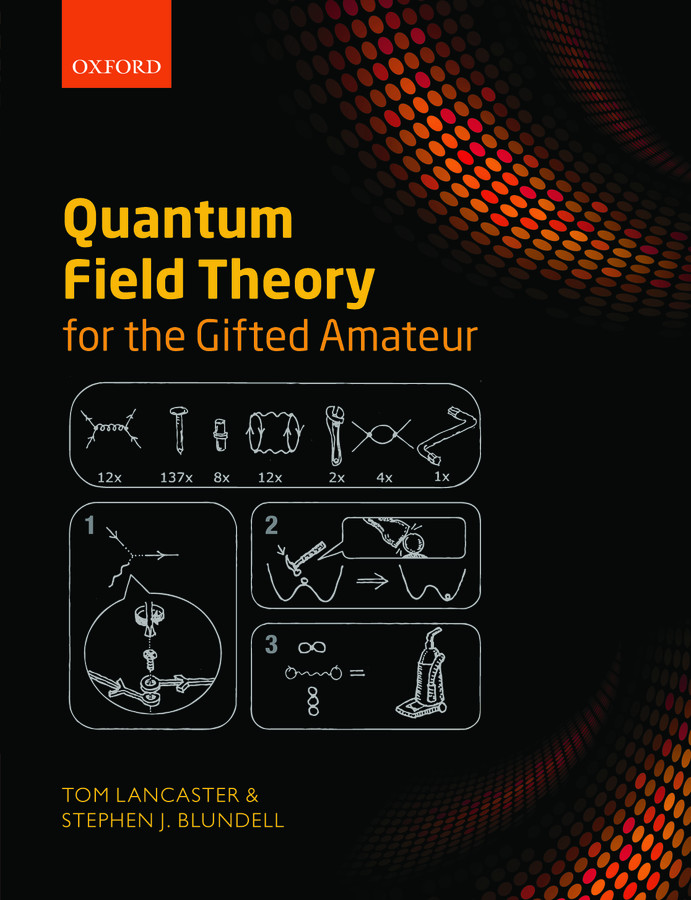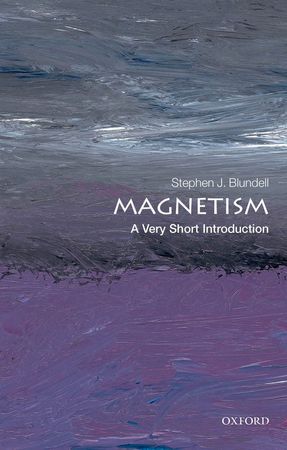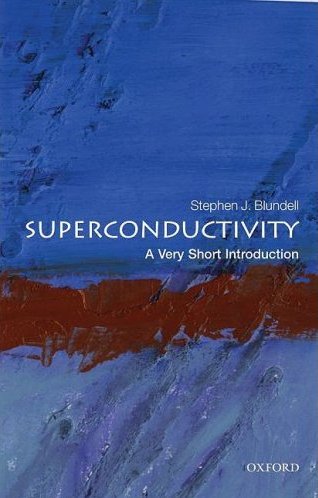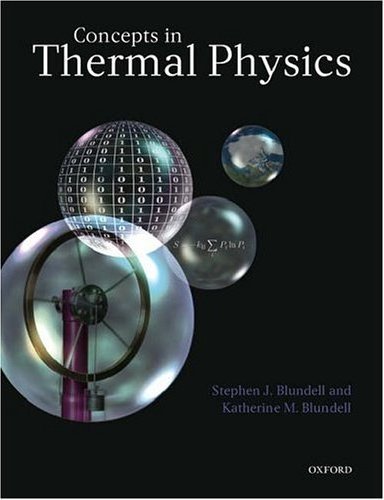- Quantum Field Theory for the Gifted Amateur
-

|
This new book by Dr. Tom Lancaster and myself will be published
by Oxford
University Press in April 2014.
Quantum field theory is arguably the most far-reaching and beautiful physical theory ever constructed, with aspects more stringently tested and verified to greater precision than any other theory in physics. Unfortunately, the subject has gained a notorious reputation for difficulty, with forbidding looking mathematics and a peculiar diagrammatic language described in an array of unforgiving, weighty textbooks aimed firmly at aspiring professionals. However, quantum field theory is too important, too beautiful, and too engaging to be restricted to the professionals. This book on quantum field theory is designed to be different. It is written by experimental physicists and aims to provide the interested amateur with a bridge from undergraduate physics to quantum field theory. The imagined reader is a gifted amateur, possessing a curious and adaptable mind, looking to be told an entertaining and intellectually stimulating story, but who will not feel patronised if a few mathematical niceties are spelled out in detail.
Using numerous worked examples, diagrams, and careful physically motivated explanations, this book will smooth the path towards understanding the radically different and revolutionary view of the physical world that quantum field theory provides, and which all physicists should have the opportunity to experience.
Link.
|
- A Very Short Introduction to Magnetism
-

| This short introduction to magnetism is published by Oxford
University Press in June 2012. The Very Short Introduction series
represents a wide variety of topics in history, philosophy, religion,
science, and the humanities. Magnetism is a strange force,
mysteriously attracting one object to another apparently through empty
space. It has been claimed as a great healer, with magnetic therapies
being proposed over the centuries and still popular today. Why are its
mysterious important to solve? In this Very Short Introduction, I
explain why. For centuries magnetism has been used for various
exploits; through compasses it gave us navigation and through motors,
generators, and turbines it has given us power. I explore our
understanding of electricity and magnetism, from the work of Galvani,
Ampere, Faraday, and Tesla, and goes on to explore how Maxwell and
Faraday's work led to the unification of electricity and magnetism,
thought of as one of the most imaginative developments in theoretical
physics.
Link.
|
- A Very Short Introduction to Superconductivity
-
 |
This short introduction to superconductivity is published by
Oxford University Press in May 2009. The Very Short Introduction
series represents a wide variety of topics in history, philosophy,
religion, science, and the humanities. Superconductivity is one of
the most exciting areas of research in physics today. Outlining the
history of its discovery, and the race to understand its many
mysterious and counter-intuitive phenomena, this Very Short
Introduction explains in accessible terms the theories that have been
developed, and how they have influenced other areas of science,
including the Higgs boson of particle physics and ideas about the
early Universe. It is an engaging and informative account of a
fascinating scientific detective story, and an intelligible insight
into some deep and beautiful ideas of physics.
Link.
|
- Concepts in Thermal Physics
-
 |
I have written a book, together with Professor Katherine
Blundell, which was published by Oxford University Press in July
2006. This covers kinetic theory, thermodynamics, statistical
mechanics and applications in astrophysics, atmospheric physics,
information theory and many other areas.
An understanding of thermal physics is crucial to much of modern
physics, chemistry and engineering. This book provides a modern
introduction to the main principles that are foundational to thermal
physics, thermodynamics and statistical mechanics. The key concepts
are carefully presented in a clear way, and new ideas are illustrated
with copious worked examples as well as a description of the
historical background to their discovery. Applications are presented
to subjects as diverse as stellar astrophysics, information and
communication theory, condensed matter physics and climate
change. Each chapter concludes with detailed exercises.
Link.
|
- Magnetism in Condensed Matter
-

|
My textbook on magnetism was published by Oxford University Press in October 2001.
An understanding of the quantum mechanical nature of magnetism has led
to the development of new magnetic materials which are used as
permanent magnets, sensors, and in information storage. Behind these
practical applications lie a range of fundamental ideas, including
symmetry breaking, order parameters, excitations, frustration, and
reduced dimensionality. This textbook presents a logical
account of these ideas, starting from basic concepts in
electromagnetism and quantum mechanics. It outlines the origin of
magnetic moments in atoms and how these moments can be affected by
their local environment inside a crystal. The different types of
interactions which can be present between magnetic moments are
described. The final chapters of the book are devoted to the magnetic
properties of metals, and to the complex behaviour which can occur
when competing magnetic interactions are present and/or the system has
a reduced dimensionality. Throughout the text, the theoretical
principles are applied to real systems. There is substantial
discussion of experimental techniques and current research topics. The
book is copiously illustrated and contains detailed appendices which
cover the fundamental principles. Link. |
|